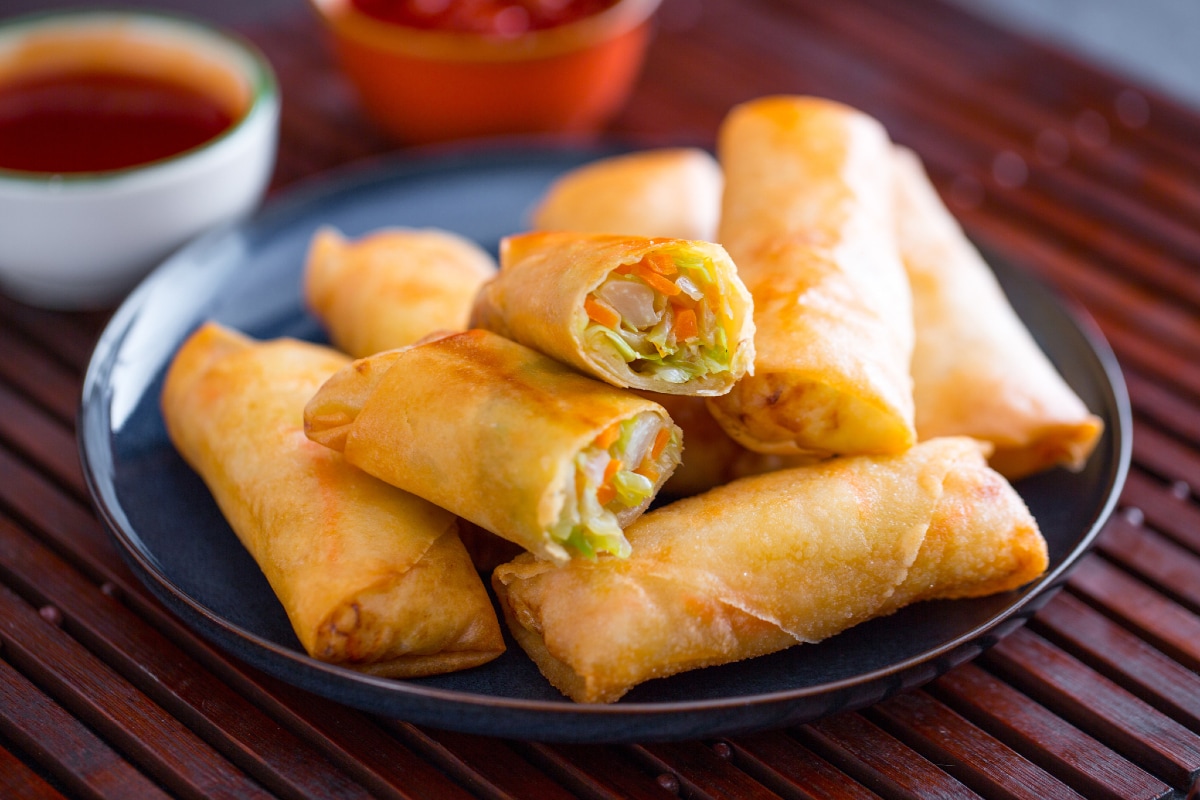Chinese Steamed Dumplings
- Difficult
- 1 h 10 min
- Kcal 439

In the past, they were mainly prepared for the Chinese New Year, which according to the traditional calendar coincides with the beginning of spring... hence their name: spring rolls! There are many variations of this typical Chinese appetizer: Chef Mulan has chosen to bring to GialloZafferano kitchens the vegetarian version filled with napa cabbage, onion, and carrots, but you can also add soybean sprouts or chicken or pork meat, for example. Using ready-made wrappers, you'll see that making spring rolls with your hands will be a piece of cake! Serve them hot with spicy or sweet and sour sauce and continue the evening choosing from the most beloved recipes of Chinese cuisine:
And to conclude, of course... fried ice cream!

To prepare spring rolls, first thaw the ready-made wrappers and cover them with a damp cloth to prevent drying. Clean and thinly slice the napa cabbage 1, onions 2, and carrots 3.

Heat the wok over high heat, then pour the oil and onions 4. Sauté for a couple of minutes, then add the carrots and napa cabbage 5. Season with salt and pepper 6.

Add the rice wine 7 as well and stir-fry the vegetables for 4-5 minutes: they should be cooked but still crunchy 8. Transfer the vegetables to a colander to drain off the excess liquid, then spread them out a bit with chopsticks to better preserve their color and texture 9.

Now you can assemble the rolls: place a wrapper on the cloth with a corner facing you and add a handful of filling to the lower half 10. Fold the lower corner upwards and roll up without pressing to cover the filling 11, then fold the side corners towards the center 12.

Finally, roll the wrap from the bottom upwards 13 and seal the edges by moistening them with a bit of egg white 14, you can use your fingers or a brush. Do not press too hard or the wrapper may break. Proceed in this manner to form all the rolls 15.

Now reheat the wok, then pour in plenty of oil 16 to reach 355°F. When the oil is at the right temperature, lower the heat slightly and fry a few rolls at a time 17, turning them on both sides 18.

Once they are nicely golden brown on both sides, drain the rolls 19 and place them on kitchen paper to soak up excess oil 20. Serve your spring rolls still hot with spicy or sweet and sour sauce 21!